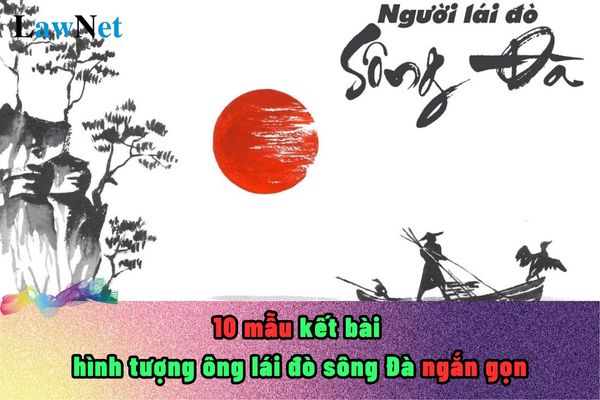What are the 10 brief sample conclusions on the image of the boatman on the Da River? Is distorting the content in the Literature curriculum a prohibited act?
What are the 10 brief sample conclusions on the image of the boatman on the Da River?
12th-grade students can refer to the following 10 brief sample conclusions on the image of the boatman on the Da River:
|
10 brief sample conclusions on the image of the boatman on the Da River
|
*Note: The above 10 brief sample conclusions on the image of the boatman on the Da River are for reference purposes only./.

What are the 10 brief sample conclusions on the image of the boatman on the Da River? Is distorting the content in the Literature curriculum by 12th-grade students a prohibited act? (Image from the Internet)
What is the text corpus used for the 12th-grade Literature curriculum in Vietnam?
According to subsection 2, Section 5 of the General Education Program in Literature issued with Circular 32/2018/TT-BGDDT, the text corpus used for the 12th-grade Literature curriculum in Vietnam includes the following texts:
(1). Literary Texts
- Legendary tales, short stories, and modern novels
- Modern lyrical poetry
- Comedy
- Features, diaries, or memoirs
(2). Argumentative Texts
- Social argument
- Literary argument
(3). Informational Texts
- Explanations incorporating one or more elements such as description, narrative, expression, argument
- Research reports, and work-related letters.
In Vietnam, is distorting the content in the Literature curriculum by 12th-grade students a prohibited act?
Under Article 22 of the Education Law 2019:
Prohibited activities in educational institutions
1. Disrespect of dignity and honor, committing physical assault towards teachers, staff, labour workers of educational institutions and towards learners.
2. Distortion of educational contents.
3. Cheating in learning, testing, examination, admission.
4. Smoking; alcohol consumption; security and order disruption.
5. Forcing students to take extra classes for money.
6. Forcing contributions in cash or in kind in the name of educational sponsorship or support.
Additionally, Clause 2, Article 38 of the lower secondary school, upper secondary school and multi-level school charter issued with Circular 32/2020/TT-BGDDT stipulates as follows:
Reward and discipline
...
2. Students making a mistake during the learning and training process shall be corrected or disciplined in the following ways:
a) Give the student a reminder, directly support them in correcting their mistake.
b) Reprimand the student, inform the student’s parent(s) to have the parent(s) cooperate in supporting the student in correcting their mistake.
c) Suspend the student’s study at school for a definite period and take other correcting measures according to regulations from the Ministry of Education and Training.
Thus, according to the regulations, distorting the content in the Literature curriculum by 12th-grade students is one of the prohibited acts.
Moreover, depending on the severity of the act, the student will be considered for handling according to the regulations.

